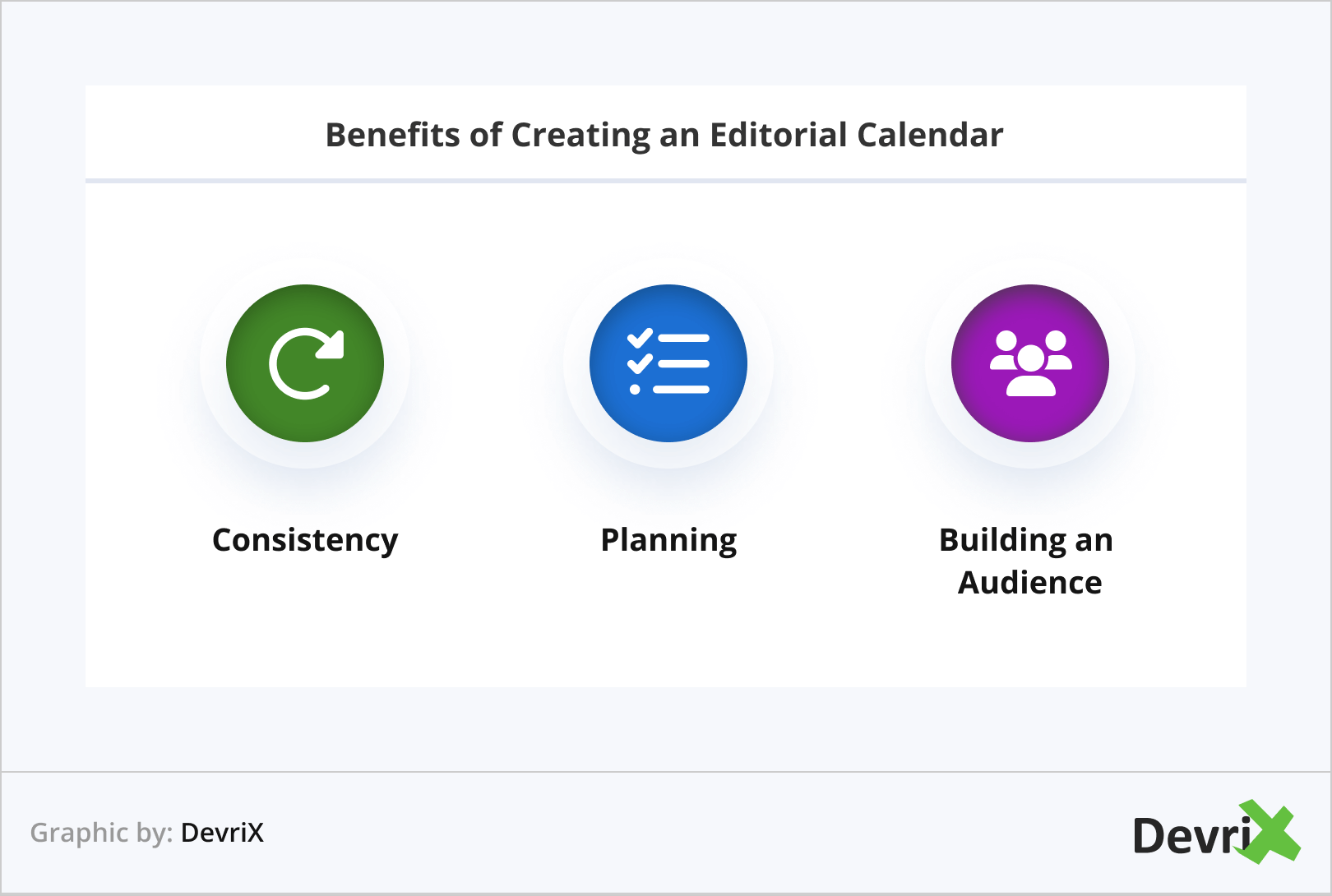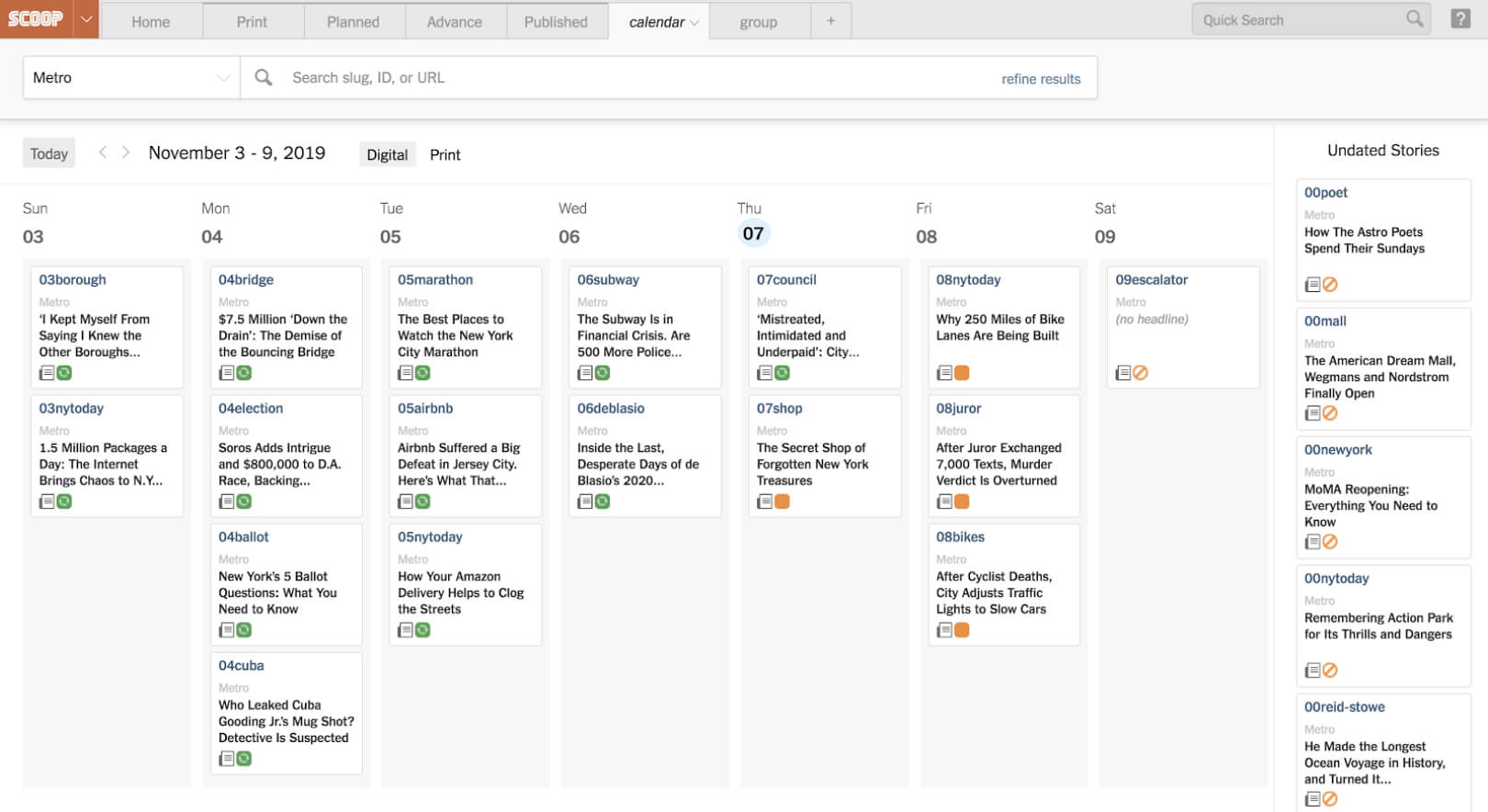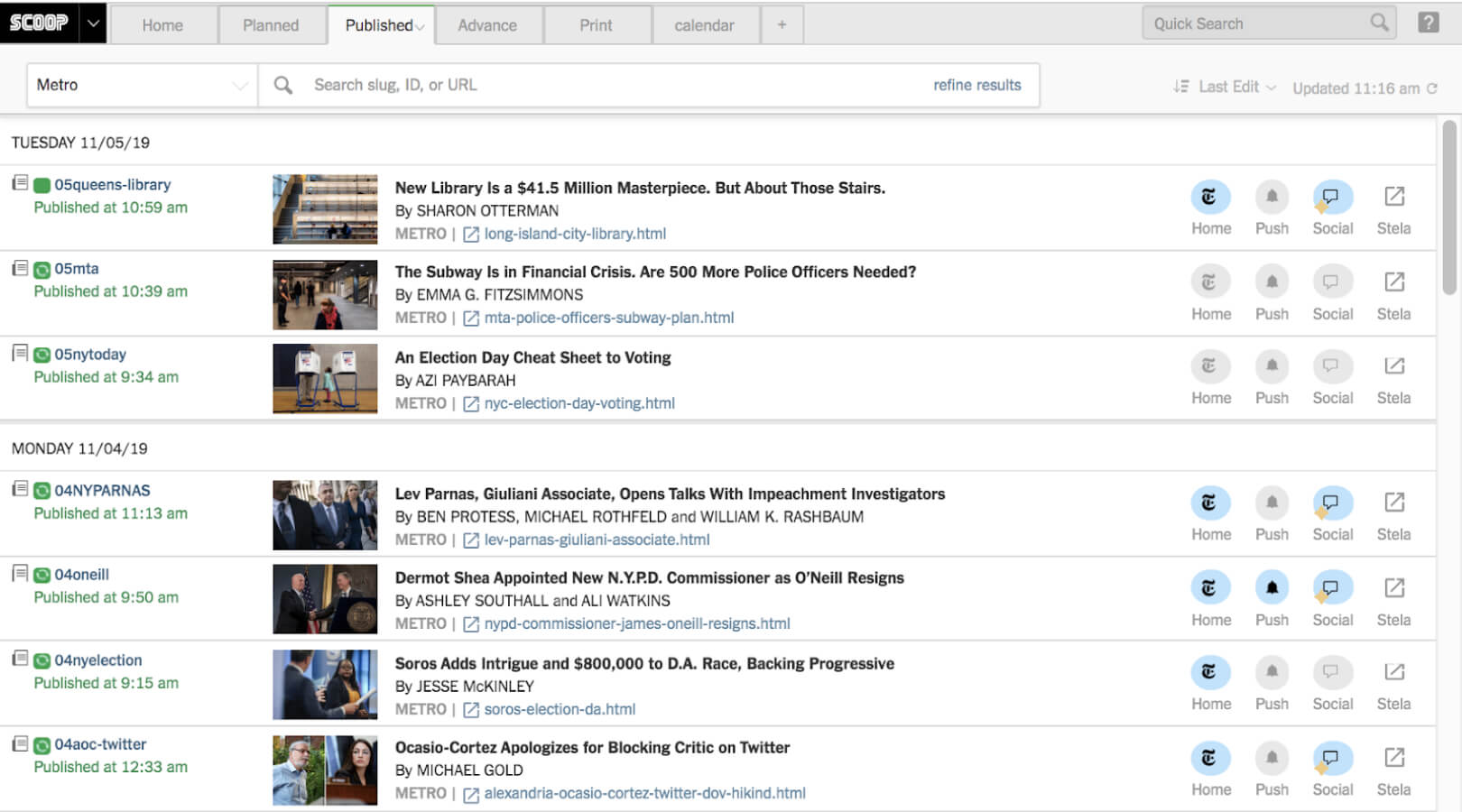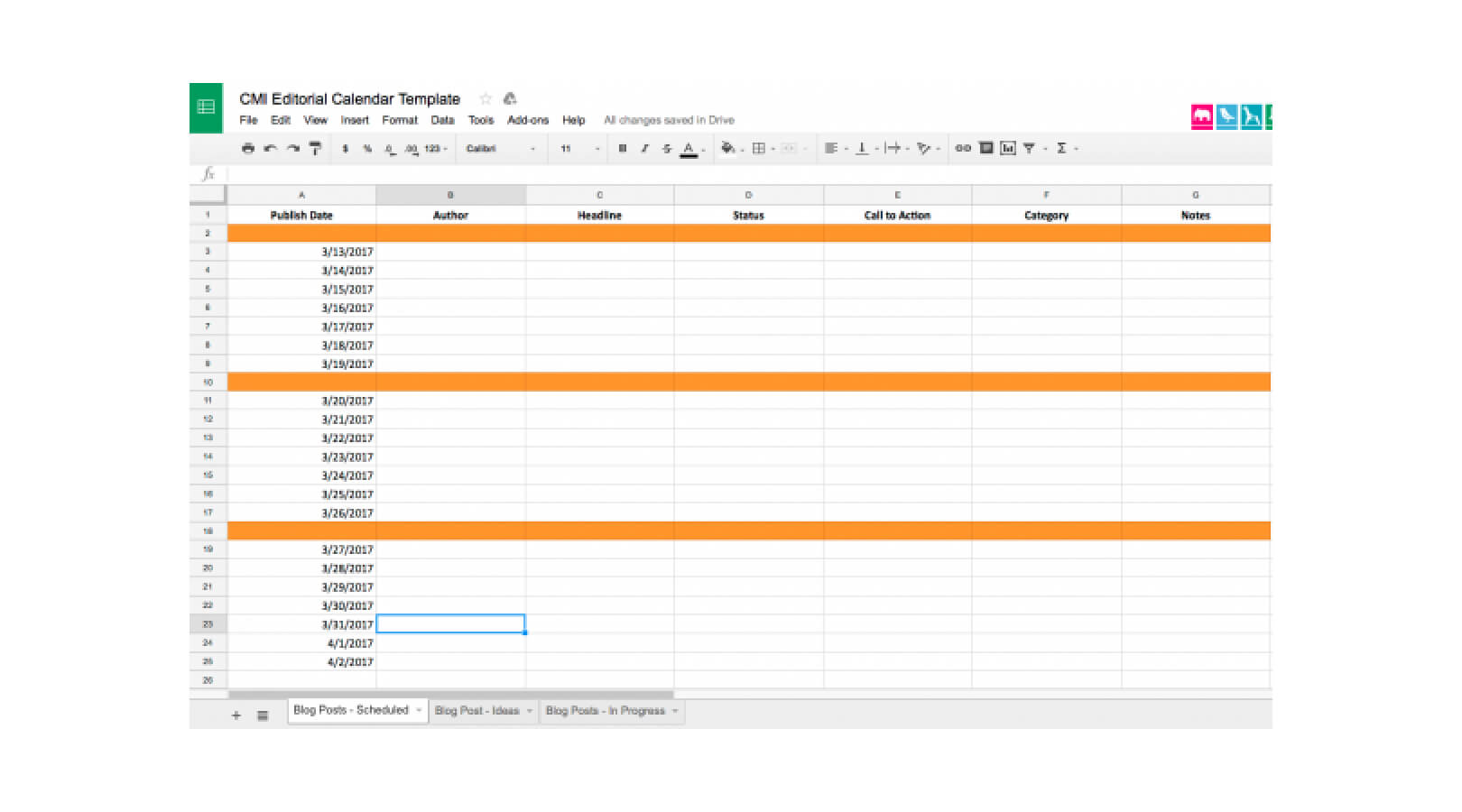In the past, editorial calendars were something that only newspaper and magazine employees knew and cared about. However, with the digitalization of business and the rise of inbound marketing, the term has become something that almost everyone who manages content is familiar with.
Nowadays, most people with internet access publish information online in one form or another. We post and comment on social media, write blogs, create videos, and whatnot.
However, when the content is business related, regardless of whether its purpose is to inform, educate, entertain, or advertise, there is a commercial agenda behind it. For it to be successful a certain degree of planning and organization is required.
The editorial calendar is one of the tools that helps facilitate the proper and the successful implementation of content strategies and inbound marketing. However, for those that are new to the field, it may be difficult to figure out the specifics of what an editorial calendar is and how it may differ from other similar tools, such as a content calendar for example.
In this article, we’ll highlight everything you need to know about editorial calendars and provide actionable tips on how to build your own. Read on to find out more!
What Is an Editorial Calendar?

An editorial calendar is an organizational tool that publishers, businesses with an inbound strategy, and bloggers use to plan and streamline content delivery. Simply put, it’s a calendar that shows when to publish pieces of content.
However, depending on how many people are involved in the publishing process, what types of content the editorial team produces, where they distribute it, and how often they publish, the calendar may have different levels of complexity. It can be as simple – or as complicated – as pen and paper notes, a desktop planner, a detailed spreadsheet, or a dedicated software tool.
Regardless of the format, the editorial calendar provides an overview of the publishing strategy of the company and informs the content creation planning team, when and how each created piece of content is delivered to the audience. It’s where your content strategy, content workflow, content stockpile, and publishing schedules meet.
Do You Need an Editorial Calendar?
The short answer is – it depends on what type of operation you are running.
Let’s have a look at who may benefit from an editorial calendar and who can go without one:
Bloggers

If you are a blogger or any other type of single-person operation and publish more or less the same type of content on a weekly or monthly basis, you may not need a dedicated editorial calendar. It can, indeed, help you plan and organize your strategy better, but it’s a safe bet that if you have been doing well without it so far, you should not complicate things unnecessarily.
However, if you are planning to expand your content creation efforts and publish more often you may need to do some preliminary planning. To that end, an editorial calendar will allow you to streamline your processes, meet your goals, and maintain consistency.
Content Marketers
Content marketing is a business endeavor and as such, to deliver results, it needs to meet a certain level of quality and consistency. To that end, there are usually multiple people involved in the content creation process, including, but not limited to, content strategists, marketers, writers, editors, graphic designers, and subject matter experts.
Managing the content production workflow and ensuring that there is enough content in the pipeline is one thing. However, strategizing what type of content to publish and when, so that you target the right leads and achieve optimal engagement, is a completely different story.
Without an editorial calendar, your publishing strategy could become messy and disorganized. And, if your efforts are random, so will be the results.
In line with that, the most important benefits an editorial calendar presents to businesses are:

- Consistency. It enables you to create a straightforward publishing schedule and regularly deliver content based on topics, types, and channels.
- Planning. When you know what type of content you need for each publication slot, it’s easier to plan content production and prioritize tasks.
- Building an Audience. Consistent inbound efforts allow you to “train” your audience to expect your content and look forward to it. People are creatures of habit, and once they learn a pattern, they enjoy following it.
Publishers
Print and digital publishers are the pioneers of the editorial calendar. They have been using these tools forever to plan, organize, and map out what content goes on every page of upcoming editions.
Nowadays, publishers need editorial calendars more than ever, because, aside from production and publication planning, they play an important role in ensuring the company’s ad-created revenue.
Many publications make their editorial calendars for upcoming periods public and available to advertisers to bid on ad spaces. This way, marketing agencies can align their ads with the page’s content and position them to make the most impressions and drive the most engagement. As a result, both the publisher and the advertiser can profit from the interaction.
Therefore, creating, planning, and populating the editorial calendar with interesting, relevant, and properly timed content is more important to publishers than to anyone else.
To that end, the New York Times, for example, has built their own tools to plan, oversee, and manage the editorial process.
Editorial Vs. Content Calendar
The editorial and content calendars are very closely related so it’s easy to mistake one with the other, and people, more often than not, use the terms interchangeably.
However, there’s a difference.
The content calendar streamlines the content production process. It focuses on specific pieces of content and tracks their creation – writing, editing, visulas, etc. In it, the life cycle of each piece of content – from an idea to a ready-to-publish product – is mapped out, scheduled, and monitored.
The editorial calendar, on the other hand, focuses on the ready content and its position in the publishing schedule, and visualizes the grander scheme of the content marketing strategy.
Furthermore, the company may have different content calendars for social media, video, blogging, landing pages, etc., and these all come together in the editorial calendar.
Types of Editorial Calendars
As mentioned, there are, generally, three types of editorial calendars – pen and paper, spreadsheets, and specialized software.
Let’s have a look at what defines each:
Pen and Paper

Pen and paper is the oldest and most basic form of an editorial calendar, and, as the name suggests, it involves writing down your ideas, plans, and schedule without the use of digital tools. It can be implemented in the form of simple notes, or be structured, organized, and comprehensive, or anything in-between.
- Notes. Simple, but limited and, potentially, disorganized. This type of approach is usually suitable for single-person operations and casual bloggers who don’t publish content too often.
- Desktop Planner. Although they don’t provide the flexibility and clean design of online solutions, old-school desktop planners are still the preferred organizational tools for many non tech-savvy marketers. They can be efficient for creating an editorial calendar, but limit collaboration and coordination.
Spreadsheets
Spreadsheets are probably the most convenient, affordable, and commonly used type of editorial calendar.
Nowadays, the best option is Google Docs as it allows for hassle-free collaboration by making the calendar easily accessible by everyone on your team.
Furthermore, a spreadsheet can be set up to meet practically any requirement and facilitate a team’s needs.
- Simple. A basic spreadsheet can provide structure without overcomplication. In it, you can add tabs for what the content is, due dates, who’s responsible, and completion status. Depending on your personal needs, you can customize tabs as well.
- Complex. A more advanced spreadsheet can be enhanced with color codes for the different types of content, as well as additional information about keywords, meta information, design and visuals, and other information from your content calendar.
Specialized Software
If you want to take your editorial calendar to the next level, there’s a variety of tools that can help you with that. These may be overkill if you are running a small operation, but when there are multiple people involved in the content creation process and new content is being constantly produced it can be a godsend.
- Project Management. Some project management tools (such as Trello, and Asana), have inbuilt templates for editorial calendars so that you don’t need to buy additional tools. These include organizing information in the form of cards, tasks groups, etc. and having inbuilt dashboards that provide an overview of the pipeline and your calendars status.
- Dedicated Platforms. There are stand-alone editorial calendar tools (such as CoSchedule, and Loomly) dedicated solely to the purpose of helping you organize and streamline your publishing efforts better. These have different features designed to help your team collaborate, provide better overview of the publication schedules, and ensure that the editorial process runs smoothly.
Useful Tips
When building your own editorial calendar, there are many things you need to take into account and most of those are specific to you and your organization. However, we can provide a few general tips to help you make the right decisions:
- Create a Stockpile. To make sure that your editorial calendar doesn’t run out of content, you should be ready with the pieces for the next period (week, month, etc.) at least one period ahead of time. This will provide you with enough time to fill in gaps in a timely manner and always be on schedule.
- Be Flexible. Leave margin for changes. Publishing is a dynamic field, regardless of whether you are a blogger, a business, or a news outlet. You should always be ready to move things around to prioritize more pressing or current content.
- Know Your Audience. How you arrange the content in your editorial calendar should be dictated not only by your business goals, but by your audience’s behavior and preferences. Tracking and taking these into account will ensure that your content has better engagement and overall results.
- Don’t Overcomplicate Things. The goal of the calendar is to make things easier for everyone involved. If it becomes too complicated or even confusing, you may need to revise it or try out a different format.
- Keep Everyone in the Loop. Everyone on your team should have access to the calendar and be encouraged to provide suggestions. Sometimes a fresh set of eyes can see opportunities that others don’t and provide the best improvement ideas.
Bottom Line
An editorial calendar is an invaluable tool in content strategizing that can benefit not only digital publishers, but inbound marketers and bloggers as well. While these groups may have different editorial needs, what they have in common is that in order for their content to achieve its maximum potential, it has to be well-organized and in a timely manner.
Regardless of what type of medium you choose for your editorial calendar, it’s important to keep it as clear and informational as possible. This will allow your team to collaborate freely, have transparency about the content creation process, and be able to contribute with content ideas and other suggestions.









![6 Ways to Strengthen Your B2B Content Marketing Strategy [Part 1]](https://devrix.com/wp-content/uploads/2019/12/6-Ways-to-Strengthen-Your-B2B-Content-Marketing-Strategy-Part-1@2x-380x160.png)